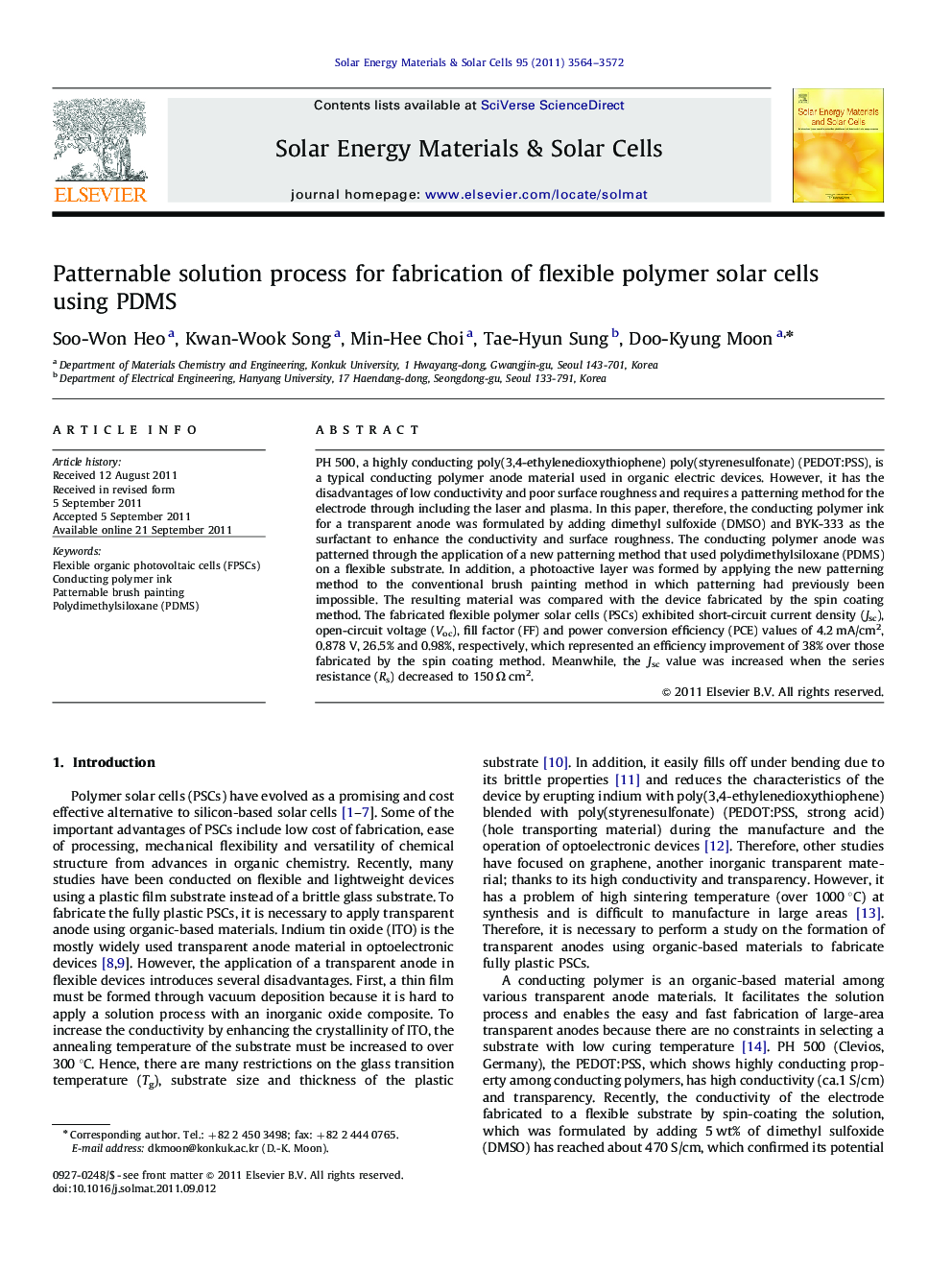| Article ID | Journal | Published Year | Pages | File Type |
|---|---|---|---|---|
| 79666 | Solar Energy Materials and Solar Cells | 2011 | 9 Pages |
PH 500, a highly conducting poly(3,4-ethylenedioxythiophene) poly(styrenesulfonate) (PEDOT:PSS), is a typical conducting polymer anode material used in organic electric devices. However, it has the disadvantages of low conductivity and poor surface roughness and requires a patterning method for the electrode through including the laser and plasma. In this paper, therefore, the conducting polymer ink for a transparent anode was formulated by adding dimethyl sulfoxide (DMSO) and BYK-333 as the surfactant to enhance the conductivity and surface roughness. The conducting polymer anode was patterned through the application of a new patterning method that used polydimethylsiloxane (PDMS) on a flexible substrate. In addition, a photoactive layer was formed by applying the new patterning method to the conventional brush painting method in which patterning had previously been impossible. The resulting material was compared with the device fabricated by the spin coating method. The fabricated flexible polymer solar cells (PSCs) exhibited short-circuit current density (Jsc), open-circuit voltage (Voc), fill factor (FF) and power conversion efficiency (PCE) values of 4.2 mA/cm2, 0.878 V, 26.5% and 0.98%, respectively, which represented an efficiency improvement of 38% over those fabricated by the spin coating method. Meanwhile, the Jsc value was increased when the series resistance (Rs) decreased to 150 Ω cm2.
Figure optionsDownload full-size imageDownload as PowerPoint slideHighlights► Bulk-hetrojunction PSCs were fabricated by patternable solution process. ► Conducting polymer ink for a transparent anode was formulated addition by DMSO and BYK-333. ► Patterned transparent anode and photo active layers formed by the PDMS. ► They were more efficient than those fabricated by the spin coating method.
